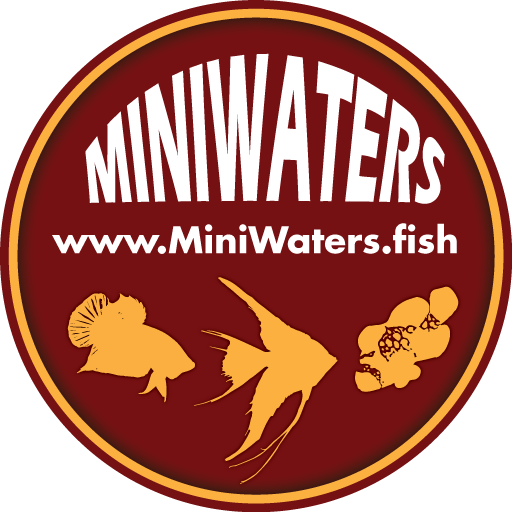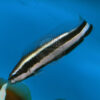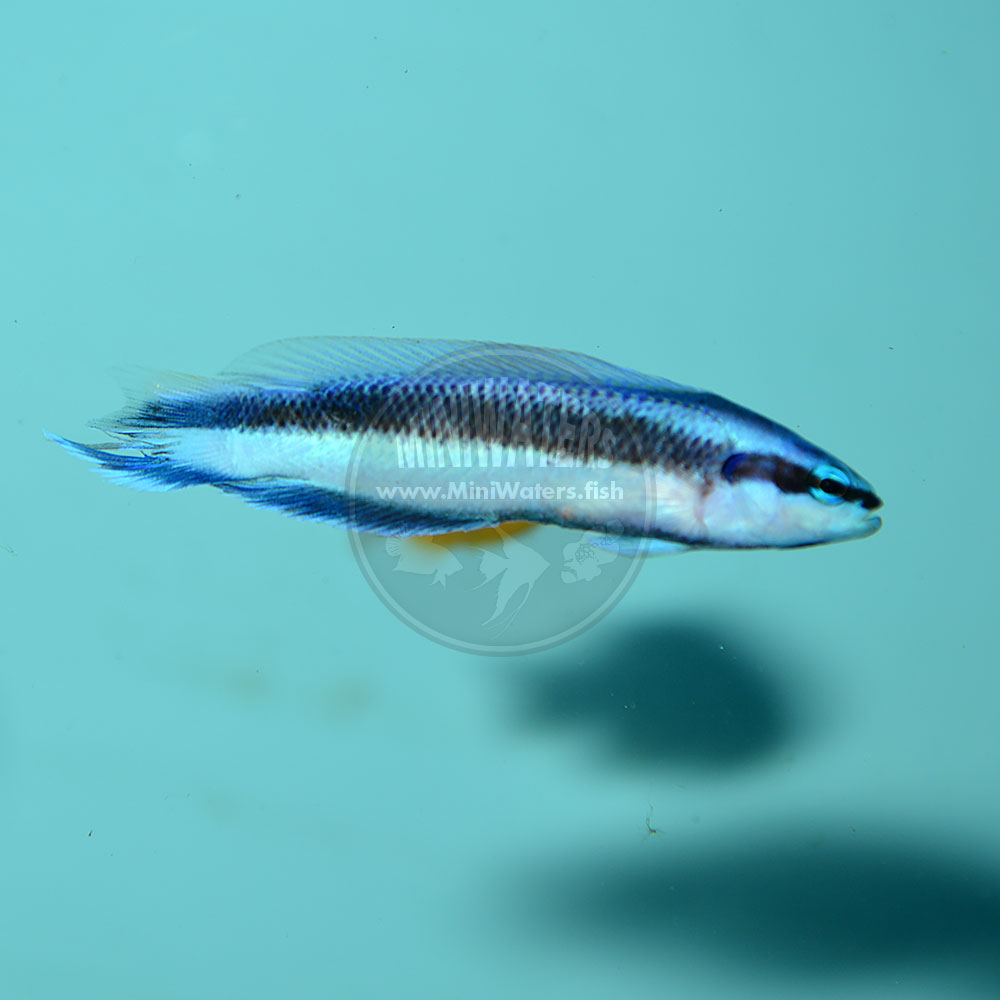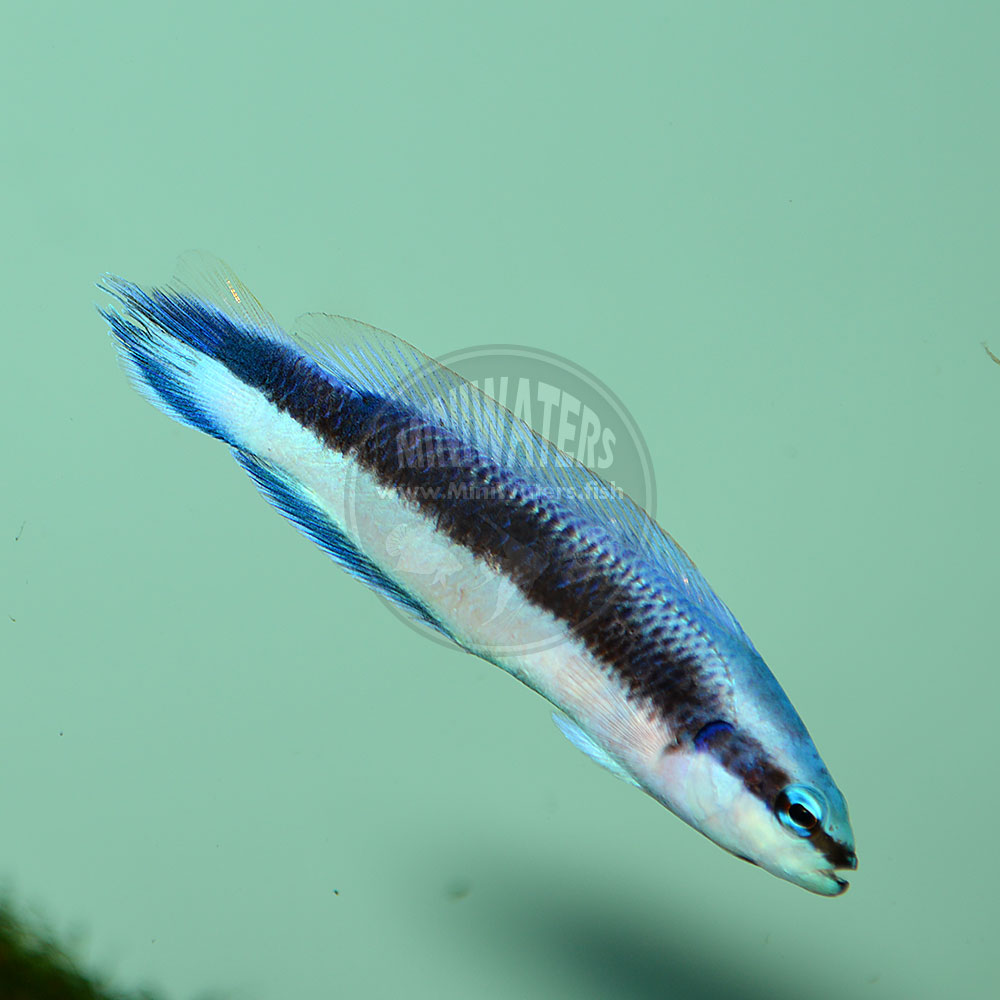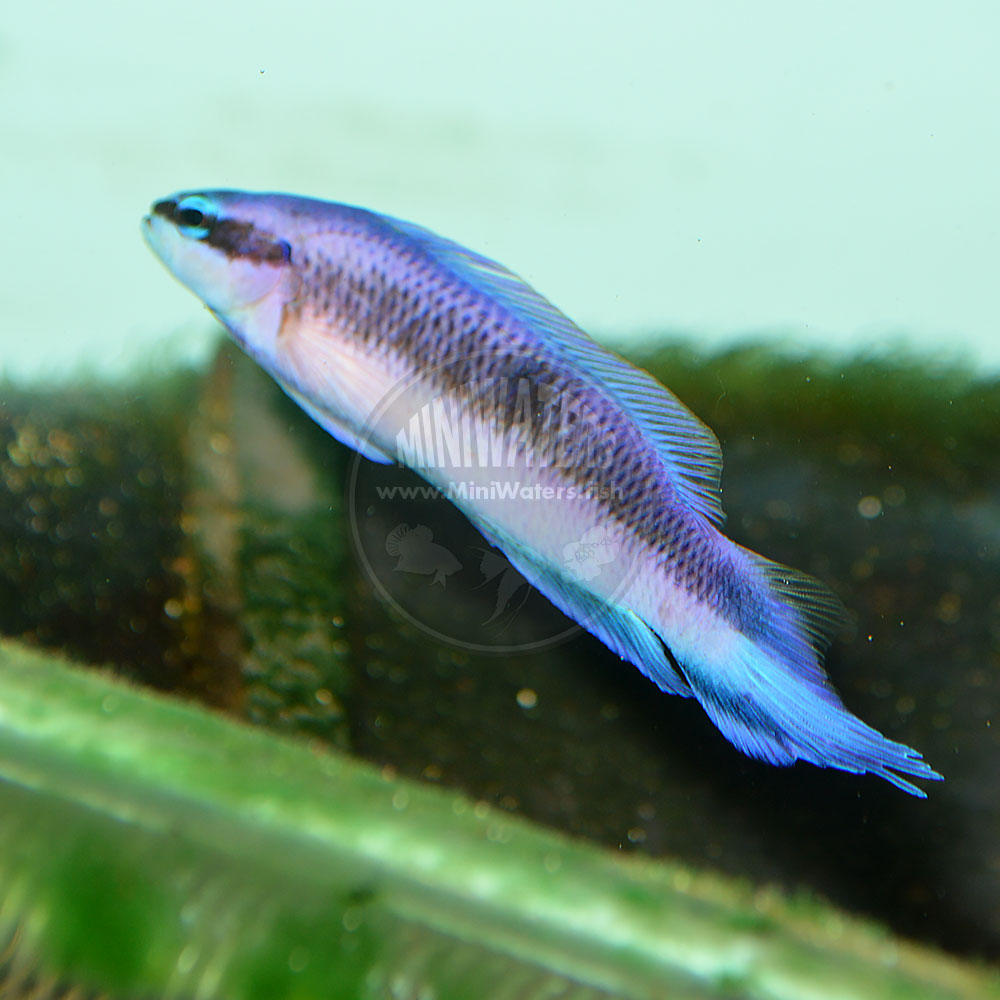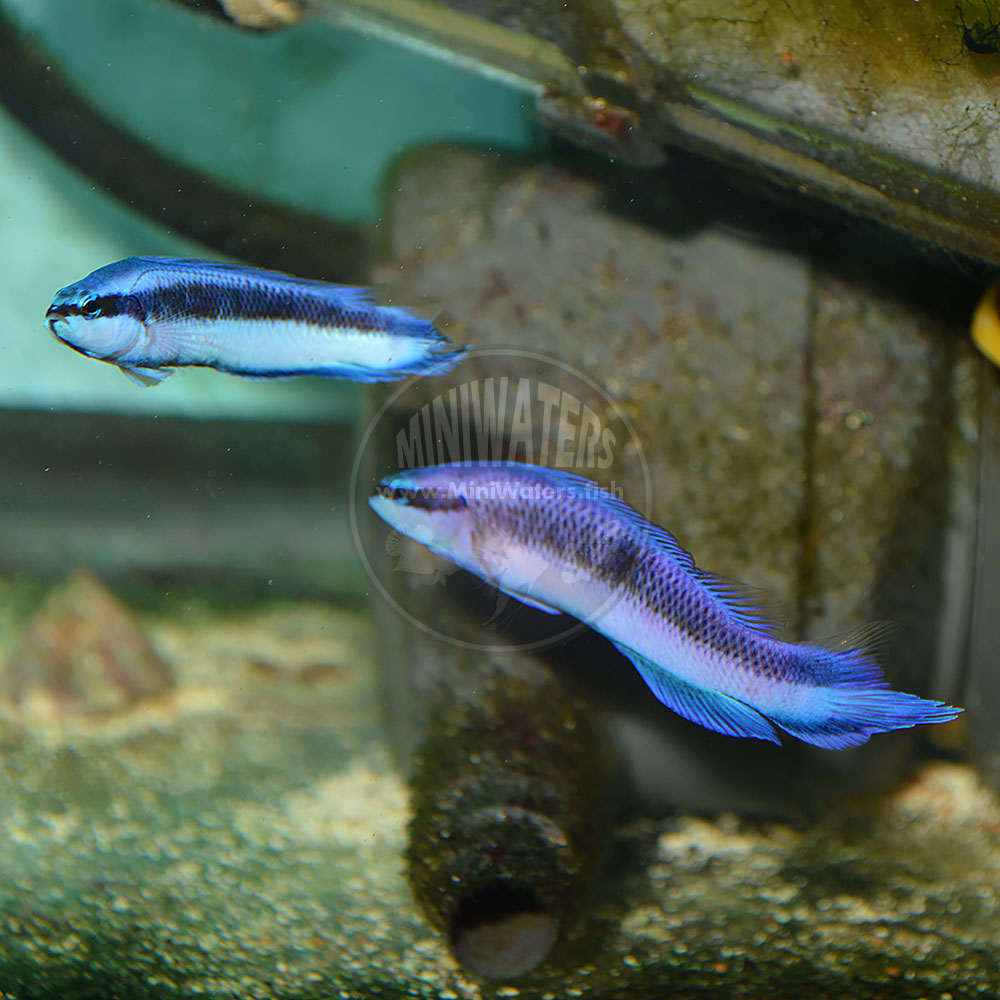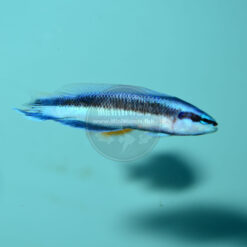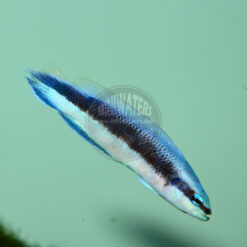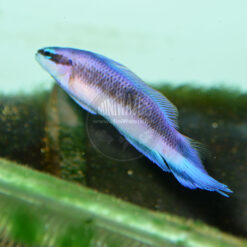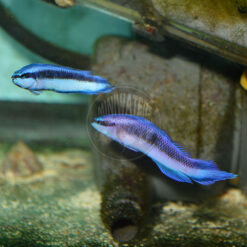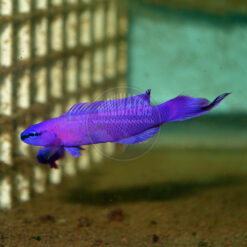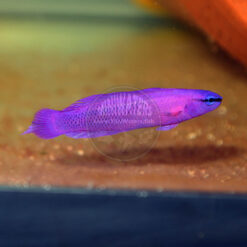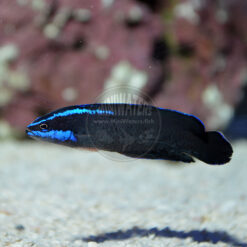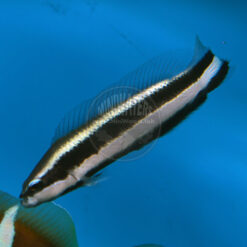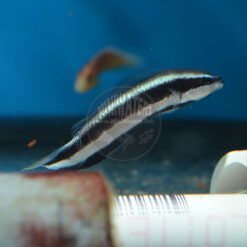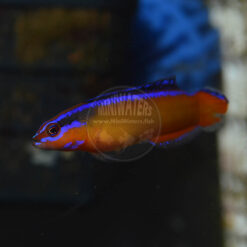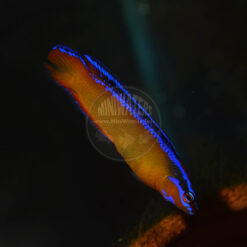Pseudochromis Hybrid “Indigo Dottyback” (sankeyi X fridmani)
Price range: $49.00 through $119.00
With the routine culture of Dottybacks from the Red Sea has come the advent of interspecies hybrids. The first, and most widely available, is the Indigo Dottyback, a hybrid of Pseudochromis (sankeyi X fridmani). There is some coloration variation between individuals of the Indigo Dottyback. This is a primary hybrid (initial hybrid between two species) and one I tend to view as relatively benign – it is readily discernible from the parental species, and highly unlikely to be mistaken for a pure fish when it comes to breeding. The same cannot be said for hybrids between outwardly similar fish species (eg. Ocellarix X Percula clownfish).
Read below for more important information on the care and breeding of dottybacks.
Regarding my offerings; Small Dottybacks are generally 1-2″ in length, juveniles that have hit salable size; Large are in the 2-3″ range. Offerings for juvenile pairs are made from fish that have been cohabiting without major aggression for at least a couple weeks. All dottybacks may ship with some minor fin damage; this is par for the course when housing multiple dottybacks together, particularly if they are young pairs. Dottybacks can and will kill mates, or proposed mates, suddenly – we make no warranties or guarantees on pair stability nor your attempts to pair these fishes with existing mates.
